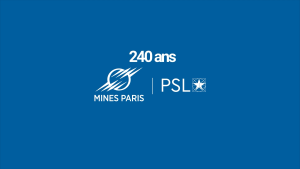



 Lecture
Lecture
Bio-based aerogels: new eco-friendly porous materials for thermal insulation and controlled release
There is currently significant interest in understanding precipitation reactions in casting alloys which are used for cylinder heads. In this work, the precipitation of β-Mg2Si particles in an A356+0.5 Cu cast aluminum alloy is addressed. Consideration of its simultaneous precipitation alongside θ-Al2Cu phase is incorporated.
The theoretical approach taken enables the simultaneous treatment of nucleation, growth and coarsening. The model is based on the framework of the KWN method and uses an implicit finite difference scheme. The continuity equation is discretized in time and space in order to obtain a matrix form. The KWN model is directly coupled to the CALPHAD software (Thermo-Calc) which provides data on the driving force for precipitation and the evolution of local equilibrium value for the solute concentration at the matrix/precipitate interface, taking into account the Gibbs-Thomson effect. Simulations with software can be used to provide quantitative predictions on the impact of the
cooling rate and age-hardening heat treatments on the size distribution of particles. The results of the model have been validated by TEM measurements.
A micromechanics model then takes in size distributions of particles to provide a prediction of yield strength of the material.
This kind of multiscale approach provides new perspective on microstructure evolution for highly loaded components such as cylinder heads, i.e. it enables a more accurate prediction of the microstructure and its evolution as a function of thermal history.
One of the factors that make composite materials so attractive to many industrial sectors is their microstructural and multi-scale modularity. This specificity offers engineers the means to adapt them to a wide range of performance criteria. But it also makes it difficult to predict part efficiency. To cope with this complexity, engineers have for many years developed a robust approach requiring numerous physical structural tests. Today, a wider use of composite materials requires the development of cost-effective solutions including “virtual testing”. One of the current trends is to develop multiscale simulations addressing the industry’s requirements and able to accurately predict composites effective properties from the properties of their constituents and morphologies. In this context, coupled numerical and analytical micromechanical modelling approaches are an efficient way to move forward.
In this thesis with Michelin as industrial partner, the transverse elastic behaviour of transversely isotropic multi-phased materials is studied. In contrast to longitudinal properties, transversal properties are much more sensitive to the local morphology of the material and the transverse direction constitutes a weakness of the material which must be well apprehended. As an application example, the case of UD with "trapped" matrix regions is investigated. For this purpose, a “n-phase” Generalized Self-Consistent Scheme (GSCS) coupled with a Morphologically Representative Pattern (MRP) approach has been developed. Analytical solutions, depending on two parameters “m” and “c”, are provided to predict the transverse shear modulus and the transverse bulk modulus. Moreover, the proposed model, written in a transversely isotropic formalism, is valid for a wide range of inclusion volume fractions and specifically for the highest volume fractions we can find in high performance composites. Morphological descriptors are used in order to address the effect of “trapped” matrix on the transverse elastic behaviour of UD composites.
A microstructural Finite Element Model (FEM) is here used to handle the complex morphologies approaching as closely as possible real microstructures. Those numerical simulations help supplying the analytical implementation for a better description of interactions between the constituents and calibrate the “m” and “c” parameters. Then, we will have to find a convenient image analysis procedure on a real microstructure that will provide the desired settings using suitable morphological descriptors. Furthermore, estimations of the local fields such as displacement, stress or strain fields will be calculated either on an analytical way or on a numerical way thanks to a finite element modelling improved by using the p-version of the Finite Element Method.
Finally, mechanical testing would be performed to assess the relevance of the proposed approach.
Arcelor-Mittal is carrying out a research program aiming at determining the forming and mechanical properties of Zn-Al-Mg coatings on hot-dip galvanized steel sheets, depending on the solidification microstructures. The research strategy is developed along 5 lines: material selection, advanced characterization techniques, macroscopic mechanical properties of coatings, mesoscale modelling of microstructures and identification of deformation and interand transgranular damage mechanisms.
The proposed PhD project aims at applying advanced characterization and modeling techniques for a better understanding of the mechanical properties of Zn-Al-Mg coating along the previous lines. The objective is to draw from these observations new guidelines for the microstructure optimization.
As in the vast majority of industrial domains, the numerical simulation is a tool used in many stages of Safran’s activities. The complexity of the models leads to computation times of several hours (or even days) for a single run, although optimization and uncertainty quantifications require many runs. Hence, new strategies must be found. In this thesis, we are interested in the lifetime prediction of high-pressure turbine blades in aircraft engines. The computation chain contains a coupled aerothermal fluid-solid computation and an ElastoViscoPlastic (EVP) cyclic computation of which the lifetime calculation is a post-treatment. Boundary conditions for the EVP part are provided by the aerothermal computation.
The objective is to increase the speed of the EVP cyclic part by constructing a dictionary of reduced order models using machine learning tools. The idea is to use neural networks in order to identify a hyper-reduced model which is adapted to the boundary conditions. To do so, a clustering algorithm will be applied to a collection of numerous low-fidelity computations so as to build a dictionary of possible models for lifetime predictions. Then, an efficient criterion based on classification methods taken from data science will be chosen to decide in real time which hyper-reduced model is the best for fast and accurate predictions.
Some theoretical questions will also be addressed, such as the unicity of the stabilized cycle, the conditions for the reduced models to converge towards the stabilized cycle, etc. Finally, the methodology will be applied to an uncertainty quantification study on the lifetime computation of high-pressure turbine blades, for which loading cycles are not accurately known despite having an important influence.
The prediction of crack resistance is essential to guarantee the safety of industrial installations (nuclear reactors, pipelines, ...), means of transport (airplanes, automobiles, rockets, etc.). Fine fracture analysis is also required for forming processes such as folding or cutting. Nowadays, the design methods are based essentially on "global" approaches that assume the existence of a crack and use quantities from the non-linear mechanics of the fracture. However, these methods are limited when used in analyzing complex situations: crack initiation, non-proportional loading, heterogeneous zones such as welds, etc.
To overcome these difficulties, many behavior models that takes into account the physical mechanisms of degradation have been developed. However, their implementation in structure computations remains problematic. The main difficulties are: (i) a pathological dependence on the mesh (size, type, orientation), (ii) a volume locking linked to the large plastic deformations, (iii) the need to use a very fine mesh on the crack path. It is this last point which will be treated during this thesis. The first two points have been the subject of previous works [1,4].
The main purpose of the thesis is to propose a strategy of crack propagation simulations over long distances (10 to 100cm) while keeping a reasonable problem size (i.e. less degrees of freedom). It must be adapted to the context of major transformations. We will use well known behavior models [3]. The use of internal length models will make it possible to overcome the mesh dependence and to simulate non-trivial cracking paths (e.g., change of direction or plane-bevel crossing). From the continuous fields provided by these regularized models, a technique recently developed at ONERA will be used to determine the orientation of the crack increment to be inserted by remeshing [2]. A hard point of this thesis will be the determination of the insertion moment. Indeed, from a physical point of view, it is necessary to check the conservation of energy before and after insertion. On the other hand, from a numerical point of view, it would be advisable not to remesh the damaged zone too often (important cost of fields transfer, risk of introducing error when transferring fields with strong gradients).A compromise will have to be found. Ahead of the crack tip, a finely meshed zone will be introduced to represent the new PZ. On the other hand, the broken zone can be unrefined. However, to avoid affecting the calculation, the smoothing of gradients should be far enough of the crack tip. An existing experimental base (X65 pipeline steel) will be used for the applications and will notably allow the verification of crack propagation speeds.
1. Feld-Payet, S. and Feyel, F. and Besson, J., Finite element analysis of damage in ductile structures using a nonlocal model combined with a three-field formulation, Int. J. Damage Mech., 20, 655-680 (2011).
2. S. Feld-Payet, V. Chiaruttini, J. Besson, F. Feyel, A new marching ridges algorithm for crack path tracking in regularized ductile media, Int. J. Solids Struct., 71, 57-69 (2015).
3. Besson J., Continuum models of ductile fracture : a review, Int. J. Damage Mech., 19, -52 (2010).
4. Bargellini R., Besson J., Lorentz E. and Michel-Ponnelle S., A nonlocal Finite Element based on volumetric strain gradient: application to ductile fracture, Comput. Mat. Sci., 45 [3] 762-767 (2009).
5. Y. Zhang, E. Lorentz, J. Besson, Ductile damage modelling with locking-free regularized GTN model, to appear in IJNME.
We know that the local mechanical behavior in metallic materials is anisotropic and complex laws are needed for its modeling. More importantly, engineering components can be designed to meet specific needs if we can successfully relate these local properties to the actual response of a structure. In this thesis a new way of simulating the cyclic behavior of polycrystalline materials, which aims to link their micro and macromechanical properties is presented. Two different routes, mean field and finite element models, are taken to estimate the cyclic response of metallic materials. Finite element computations on polycrystal aggregates give a detailed response of all the local interactions but in the process they makes us pay a large computational cost. To date, little progress has been made to classify the complex behavior of evolving stresses and strains at a larger number of simulated cycles. We use model reduction techniques to focus on particular clusters of grains which help in quantifying the nonlinear evolution of plastic strains at the local level. As we focus on the microstructural level, the number of parameters effecting a polycrystal's mechanical response increase. Given that we are able to simulate high numbers of cycles, the nonlinear effect of these parameters is also quantified. In particular focus are the phenomena of ratcheting and mean stress relaxation which require large numbers of simulated cycles to reach their asymptotic values. Low cycle fatigue in a nickel iron based superalloy (Inconel 718) will be used as a test case.
The model reduction of mechanical problems involving contact remains an important issue in computational solid mechanics. We propose to extend the hyper-reduction method based on a reduced integration domain to frictionless contact problems written by a mixed formulation. As the potential contact zone is naturally reduced through the reduced mesh involved in hyper-reduced equations, the dual reduced basis is chosen as the restriction of the dual fullorder model basis. We then obtain a hybrid hyper-reduced model combining empirical modes for primal variables with finite element approximation for dual variables. If necessary, the infsup condition of this hybrid saddle point problem can be enforced by extending the hybrid approximation to the primal variables. This leads to a hybrid hyper-reduced/full-order model strategy. By this way, a better approximation on the potential contact zone is furthermore obtained. A post-treatment dedicated to the reconstruction of the contact forces on the whole contact zone has also been introduced. The proposed hybrid hyper-reduction strategy has been successfully applied to a one-dimensional static obstacle problem with a two-dimensional parameter space and also to a two-dimensional contact problem between two linearly elastic bodies. The numerical results show the efficiency of the reduction technique, especially the good approximation of the contact forces compared to other methods.
The contactor is an electrical apparatus mostly found in an electric board. This switchgear is a switching device equipped with an electrical coil which enables to control electrical loads. For instance, a contactor can control three-phase electric motors, lighting, heating, and so on. A 24 V DC control circuit enables to make and break a current under 400/230V AC power circuit via an electrical coil.
Its repeated use over hundred of thousands cycles leads to the ruin of the electrical contacts. The failure of the contactor comes from the electric arc during every making and breaking. The electric arc damages the electrical contact material made of a pseudo-alloy silver, tin and copper oxides (Ag-SnO₂-CuO).
The goal of this thesis is to modelize with the finite element code ZeBuLoN. Different experiments are carried to observe the evolution of the damage in the material and to estimate the current and power density injected from the arc onto the contact material.
The use of air conditioning in cars leads naturally to an over-consumption of fuel. Over one year in France for example, this overconsumption varies from 1 to 7% according to the Environment and Energy Management Agency [1].
For this reason, several projects within Renault Group aimed to reduce the consumption of the air conditioning system. It’s the case of the project [THERM], whose objective is to cut by 25% the air conditioning average consumption for combustion-powered vehicles. One of the four axes of this project concerns the choice of materials. Thus, all thermal losses through vehicle cabin walls were computed using a 0D in-house model developed under AMESim. This helps to reduce the losses through the most affected walls by using either insulating technologies, to reduce conduction losses, or new innovative glasses, to limit the effect of solar radiation.
Currently, the [NUMERICAL VEHICLE] project aims to develop an energy synthesis platform to help decision-making as soon as possible in new vehicles development process. In this context, the purpose of the current PhD topic is to develop reduction methods for 0D models and to integrate them into the cabin thermal simulation chain, in order to accelerate optimization cycles (compromise between thermal comfort and air conditioning overconsumption).
[1] L. GAGNEPAIN (2006). La climatisation automobile, Impacts consommation et pollution. ADEME – Département Technologies des Transports.
Polyurethane-bonded cores are used by Montupet in the manufacturing of aluminium to mold the internal cavities of automobile parts like cylinder-heads.
After complete solidification of the part, these cores have to be extracted, as to not leave any residual sand in the part. This decoring operation is most commonly carried out by mechanical vibrations. The objective of the ANR project FIMALIPO (FIssuration de MAtériaux à LIant POlymères) is to develop a complete understanding for the fracture and further fragmentation of sand cores with an experimental analysis and a predictive numerical modeling. The benefits of this project would improve the manufacturing process regarding the reliability and the cost reduction of these complex parts. The experimental study was done in INSA of Lyon with the PhD thesis of Claire Menet. The present work focuses on the modeling and simulation part of the project.
A constitutive elastoplastic model named Cemented Clay and Sand Model was adapted for the thermal ageing of the cores. Then, a new method of model calibration using data pruning, Finite Elements Model Updating (FEMU) and hybrid FEM/Hyper-reduction method was developed. The final aim of the thesis is the validation of a simplified method, focusing on the eigenvalues of the cylinder-head with relevant boundary conditions. It was applied with this constitutive model to predict and optimize the fragmentation of the cores during the hammering.
In the pursuit of lighter materials and optimized thin-walled components for transportation, knowledge about the characteristic ductile damage mechanisms in metal sheets is key. As the study of damage in materials has, up to now, been focused on proportional loading, the strain-damage interaction is not understood for the highly application-relevant bi-axial loading with load path changes.
Thus, our proposal aims at three-dimensional (3D) imaging of the microstructure inside flat sheet specimens evolving during material testing under such loads. For this, we extend the capability of in situ synchrotron laminography to overcome inherent shortcomings of other 3D techniques for such kind of samples. It shall be developed into a unique multiscale imaging approach from a few hundred micrometres resolution down to the nanometre scale to determine the ductile damage nucleation and growth kinetics. Strain in the material bulk will be measured using digital volume correlation. Such hierarchical 3D data will then serve as valuable input for microscopic simulations and the formulation and validation of continuum damage models suited to predict engineering-relevant mechanical properties.
During the welding of metallic parts, defects may appear. These defects can be detected, localized and measured thanks to the recent improvements in non-destructive testing. Numerical models of structures are generally defect-free or consider some defects with an idealized geometry. This work aims at developing new numerical approaches in order to be able to take defects into account. This PhD thesis focuses on the population of defects observed in autogenous butt-joints in Ti-6Al-4V obtained by Nd:YAG Pulsed Laser Beam Welding, and is divided in 3 main parts.
Firstly, X-Ray Computed tomography experiments will be carried out to observe the population of defects. Based on these data, a statistical modeling of the population will be proposed. This model will be able to render the position, shape, size and orientation of the defects. It will be used to create numerically some realistic configurations that will be inputs for mechanical simulations.
Then, finite element calculations will be carried out systematically to assess the lifetime of structures containing defects. The mechanical behavior of all the zones of the welded joint will be identified on defect-free specimens. Numerical approaches will then be adapted to take into account the stress concentrations and the stress gradients created by the defects. To validate this work, experiments on specimens with controlled defects will be carried out.
Finally, a new numerical approach based on model order reduction will be proposed. It will rely on the combination of simulations of defect-free structures on the one hand and defects embedded in an infinite matrix on the other hand. The objective is to reduce the computational time to less than a day, to make the tool suitable for production timelines.
Thermoplastics reinforced with fibers which have a good compromise of density and performances are increasingly used to replace metals in both aeronautical and automotive applications. In particular, the use of these materials under the hood allows weight reduction in vehicles and as a consequence a reduction of energy consummation and CO2 emissions. In order to be able to predict the lifetimes of such structures under their condition of service (multi-axial dynamic loads, temperatures up to 100°C, humidity), it is necessary to bring a better understanding of the damage mechanisms which can arise and the constitutive equation which describe them. Then, this study aims to predict the behavior of a given structure under cyclic loading by establishing the damage criteria related to the evolution of the microstructure :
Due to their proximity to the reactor core, structural materials in nuclear power plants undergo high level irradiations which could may hundreds of displaced atoms per incident projectile (dpa). The proof of ability to exceed lifetimes over 40 years needs to be established by performing predictive simulations of the weakening mechanisms induced by such large levels of radiant exposure.
It is well known that these steels show a very good ductility and resistance to the propagation of the ductile rupture. After irradiation and under loading, austenitic stainless steels microstructures evolve resulting in the modification of mechanical properties. We may cite the irradidation defects (Franck loops and precipitates) which are responsible for the hardening, an intergranular segregation which in-fine induces a weakening of grain boundaries, and germination and growth of intergranular cavities and/or Helium and Hydrogen bubbles (swelling) which may affect plasticity and the mechanical properties.
The aim of this study is to pursue and extend the work of two previous thesis in order to study and model the interaction of the localisation of the plastic flow, peculiar to irradiated materials, and the growth and coalescence of cavities, which are the key mecanisms of ductile rupture in these steels.
Natural and industrial surfaces always have roughness under certain magnification, and the contact occurs on separate patches corresponding to asperities of the surfaces. The evolution of the real contact area under increasing external load determines essential contact properties and strongly affects heat and mass transport in and through contact interfaces. At the same time, solution of the contact problem in turn is influenced by fluid pressure and thermal fields. We develop a monolithic approach to incorporate this strong coupling in the finite-element framework. Taking into account roughness of contacting solids at micro scale enables us to construct new advanced models of the considered multi-physical processes at the macroscopic scale relevant for industrial applications. The implementation of the thermo-mechanical coupling for contact problem will allow us to simulate the heat production due to the frictional dissipation and the heat exchange between the contacting parts, permitting us to critically analyze existing macroscopic constitutive laws for the contact heat transfer. Industrial applications include aircraft and vehicle engines, brake systems, as well as large-scale problems like friction within geological faults and basal sliding of glaciers. The coupling between the fluid flow and the mechanical contact will enable us to work on problems of sealing and lubrication. The former one is essential for aeronautic, automotive and nuclear industries, and these applications demand generalization of the solution of the coupled problem at the microscopic scale for the macroscopic scale using the roughness-dependent leakage laws. The mixed lubrication is crucial for systems in which either relative sliding velocity between the components can be rather low (starting of rotation in gear boxes, bearings, turbines, etc.) or can reverse (e.g. in pistons), or the external pressure is sufficiently high (metal forming).

Ecole
240 ans de recherche et de formation
Vidéo : 240ans de recherche…
> En savoir +
Recherche
Prix Jean Mandel 2023 mécanique des matériaux
Le prix Jean Mandel décerné tous les…
> En savoir +

Formation
Samuel Forest, élu membre de l’Académie des…
Samuel Forest lors de sa réception à…
> En savoir +

Formation
Mines Paris plébiscitée par ses étudiantes
Mines Paris - PSL, une école qui répond…
> En savoir +

Formation
Femmes de science
Chercheuses confirmées, doctorantes, élèves ou alumni,…
> En savoir +

Formation
Quelle école d’ingénieurs a le…
Mines Paris - PSL au Top 5 du classement LinkedIn 2023…
> En savoir +
